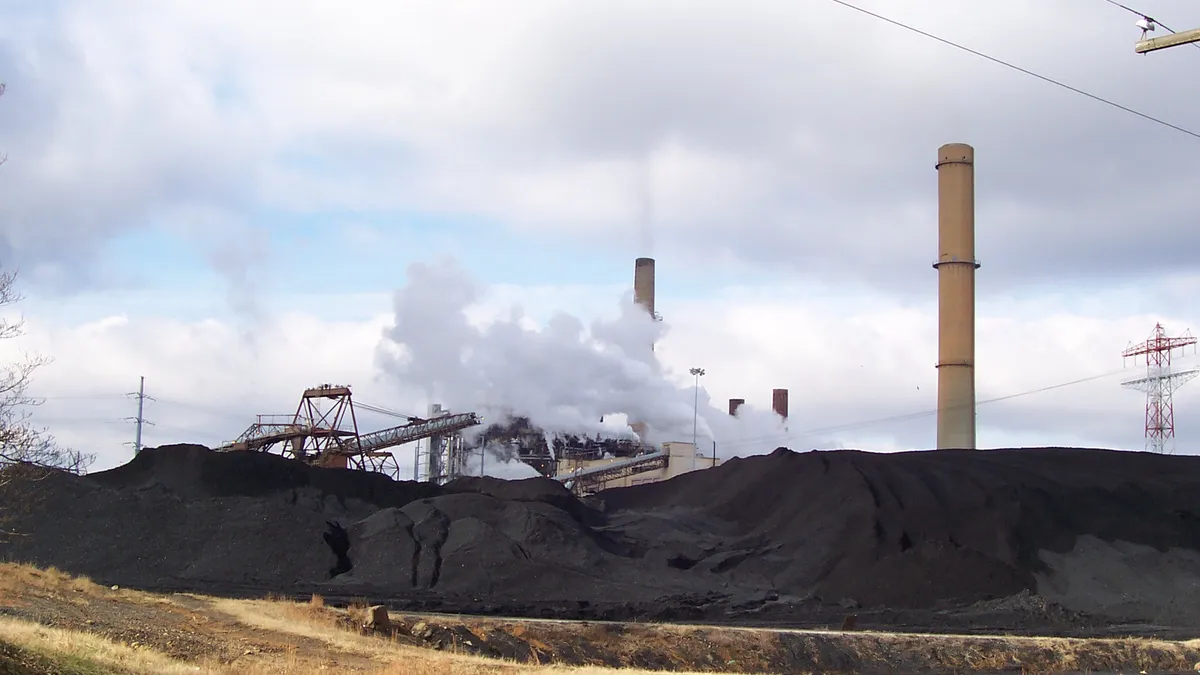Dive Brief:
-
The Supreme Court’s finding last week that the Environmental Protection Agency cannot use “generation shifting” as envisioned in the Obama administration’s Clean Power Plan will have little effect on utility plans to shift away from coal-fired power plants to renewables, according to analysts.
-
Power plant retirement decisions are largely driven by economics, and the relative economic attractiveness of renewables has widened this year given the rapid increase in natural gas, coal and power prices, Morgan Stanley & Co. analysts said in a July 6 research note.
-
Also, existing and pending EPA rules will likely continue to be a major factor in coal plant retirements, according to Julia Criscuolo, ESAI Power director of renewables and emissions. “Going forward, the EPA will likely look to achieve [greenhouse gas] reductions as ‘co-benefits’ of several other rules,” Criscuolo said Friday in an email.
Dive Insight:
Much of the action on reducing greenhouse gas emissions from the power sector has been driven by state policies, federal tax incentives and corporate “green” power purchasing decisions, according to Paul Patterson, an equity analyst with Glenrock Associates.
“Perhaps [the court decision is] a setback for the Biden EPA, but utilities aren’t changing their plans,” Patterson said Thursday.
The Morgan Stanley analysts echoed Patterson’s assessment.
“We don't see an opening for utilities or state regulators to extend out coal plant closures or slow the pace of retirements on the back of the Supreme Court decision,” they said, noting no existing carbon regulations were rolled back.
Economic considerations will continue to drive utility and regulator decision-making around the U.S. generating mix, according to the analysts.
“Coal prices have risen significantly this year and while renewables costs have also increased, solar, wind, and storage are more economic than coal in most of the country and continue to offer utilities an extremely attractive value proposition: lower customer rates, lower emissions, and higher earnings,” the Morgan Stanley analysts said.
Further, the analysts don’t think the court decision poses risks to existing Federal Energy Regulatory Commission policies on issues such as transmission return on equity, long-term transmission planning, capacity auction mechanics and energy storage policy.
“While the new environmental standards introduced by FERC in the approval of natural gas pipelines could face additional legal risk in the wake of this decision, this policy has been put on the back burner and is not currently being applied,” they said.
The court’s ruling makes the pathway to cutting carbon emissions in the United States by at least 50% by 2030 harder, but doesn’t put it out of reach, according to the Rhodium Group.
“However, EPA needs to move fast in order to help achieve the target. Without swift progress on all fronts — including in Congress and across other levels of government — the 2030 target is in jeopardy,” Rhodium Group analysts said in a July 1 report.
The court decision does not directly change any of the EPA’s existing policies or regulations that have led to recent coal plant retirement announcements, including its coal ash disposal and storage rule, according to ESAI’s Criscuolo.
Those rules will continue to weigh on the U.S. coal fleet. The EPA, for example, expects that proposed changes to its Cross-State Air Pollution Rule would lead 18 GW of coal-fired capacity and 4 GW of oil/gas-fired capacity to retire by 2030, Criscuolo noted.
Looking ahead, ESAI expects that in the next decade about 25 GW of coal will retire in the PJM Interconnection, cutting the coal fleet for the largest U.S. grid operator roughly in half. The research firm expects solar and onshore and offshore wind to grow in PJM by nearly 25 GW by the end of this decade, Criscuolo said.
PJM runs the grid and wholesale power markets in 13 Mid-Atlantic and Midwest states, and the District of Columbia.
The pace of the energy transition could be affected by issues such as grid reliability and international trade considerations around solar energy equipment, according to Patterson.
The Newsom administration in California, for example, is taking steps to potentially extend the life of the Diablo Canyon nuclear plant and some of the state’s gas-fired power plants to ensure grid reliability, Patterson said.















